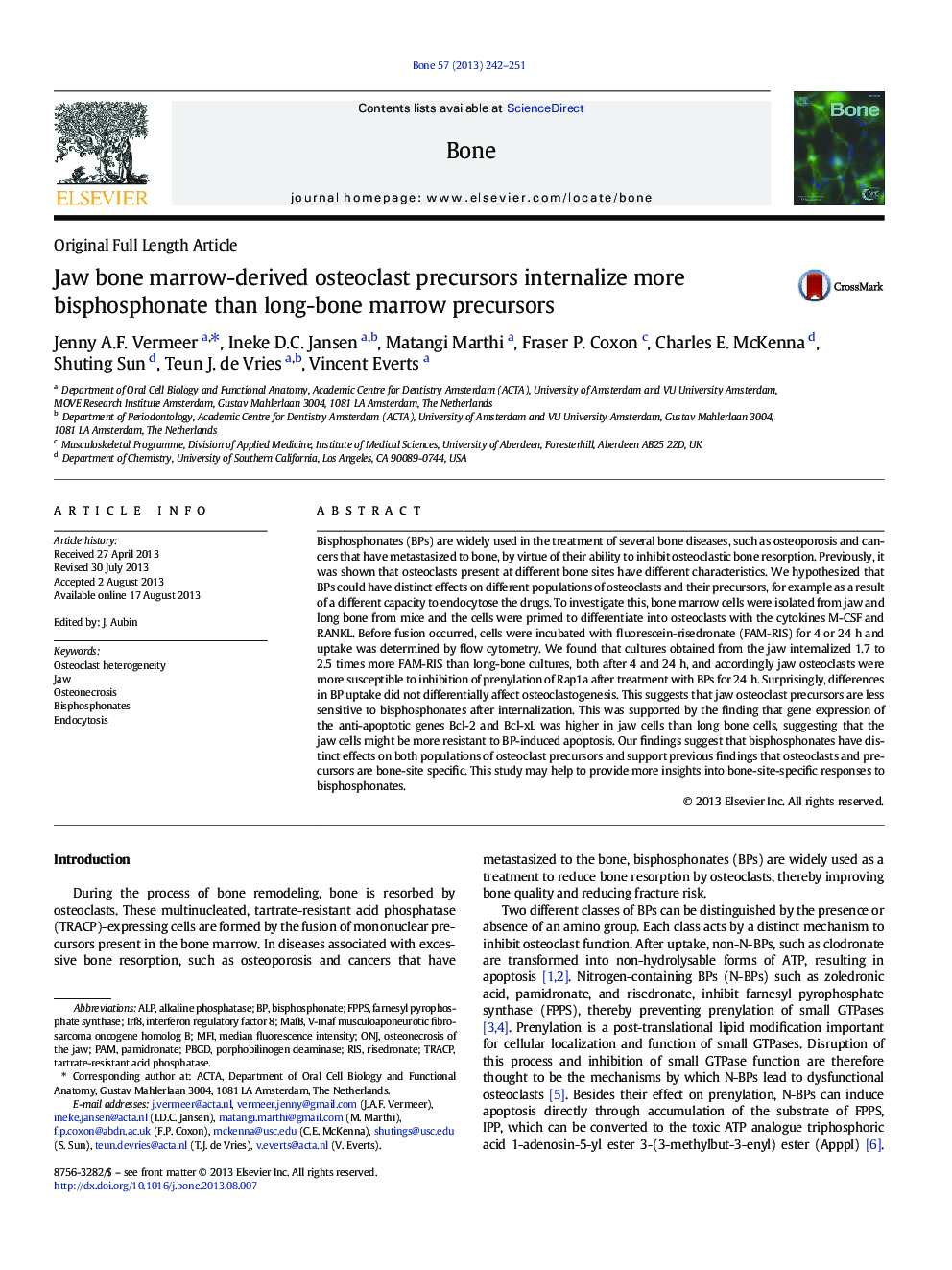| Article ID | Journal | Published Year | Pages | File Type |
|---|---|---|---|---|
| 5890892 | Bone | 2013 | 10 Pages |
Abstract
Bisphosphonates (BPs) are widely used in the treatment of several bone diseases, such as osteoporosis and cancers that have metastasized to bone, by virtue of their ability to inhibit osteoclastic bone resorption. Previously, it was shown that osteoclasts present at different bone sites have different characteristics. We hypothesized that BPs could have distinct effects on different populations of osteoclasts and their precursors, for example as a result of a different capacity to endocytose the drugs. To investigate this, bone marrow cells were isolated from jaw and long bone from mice and the cells were primed to differentiate into osteoclasts with the cytokines M-CSF and RANKL. Before fusion occurred, cells were incubated with fluorescein-risedronate (FAM-RIS) for 4 or 24Â h and uptake was determined by flow cytometry. We found that cultures obtained from the jaw internalized 1.7 to 2.5 times more FAM-RIS than long-bone cultures, both after 4 and 24Â h, and accordingly jaw osteoclasts were more susceptible to inhibition of prenylation of Rap1a after treatment with BPs for 24Â h. Surprisingly, differences in BP uptake did not differentially affect osteoclastogenesis. This suggests that jaw osteoclast precursors are less sensitive to bisphosphonates after internalization. This was supported by the finding that gene expression of the anti-apoptotic genes Bcl-2 and Bcl-xL was higher in jaw cells than long bone cells, suggesting that the jaw cells might be more resistant to BP-induced apoptosis. Our findings suggest that bisphosphonates have distinct effects on both populations of osteoclast precursors and support previous findings that osteoclasts and precursors are bone-site specific. This study may help to provide more insights into bone-site-specific responses to bisphosphonates.
Keywords
PAMTRAcPRisedronateFPPSIRF8MafBONJPBGDRISMFIALPAlkaline phosphataseEndocytosisosteonecrosisOsteonecrosis of the jawtartrate-resistant acid phosphataseBisphosphonatesBisphosphonatemedian fluorescence intensityinterferon regulatory factor 8farnesyl pyrophosphate synthasejawPamidronateporphobilinogen deaminase
Related Topics
Life Sciences
Biochemistry, Genetics and Molecular Biology
Developmental Biology
Authors
Jenny A.F. Vermeer, Ineke D.C. Jansen, Matangi Marthi, Fraser P. Coxon, Charles E. McKenna, Shuting Sun, Teun J. de Vries, Vincent Everts,
